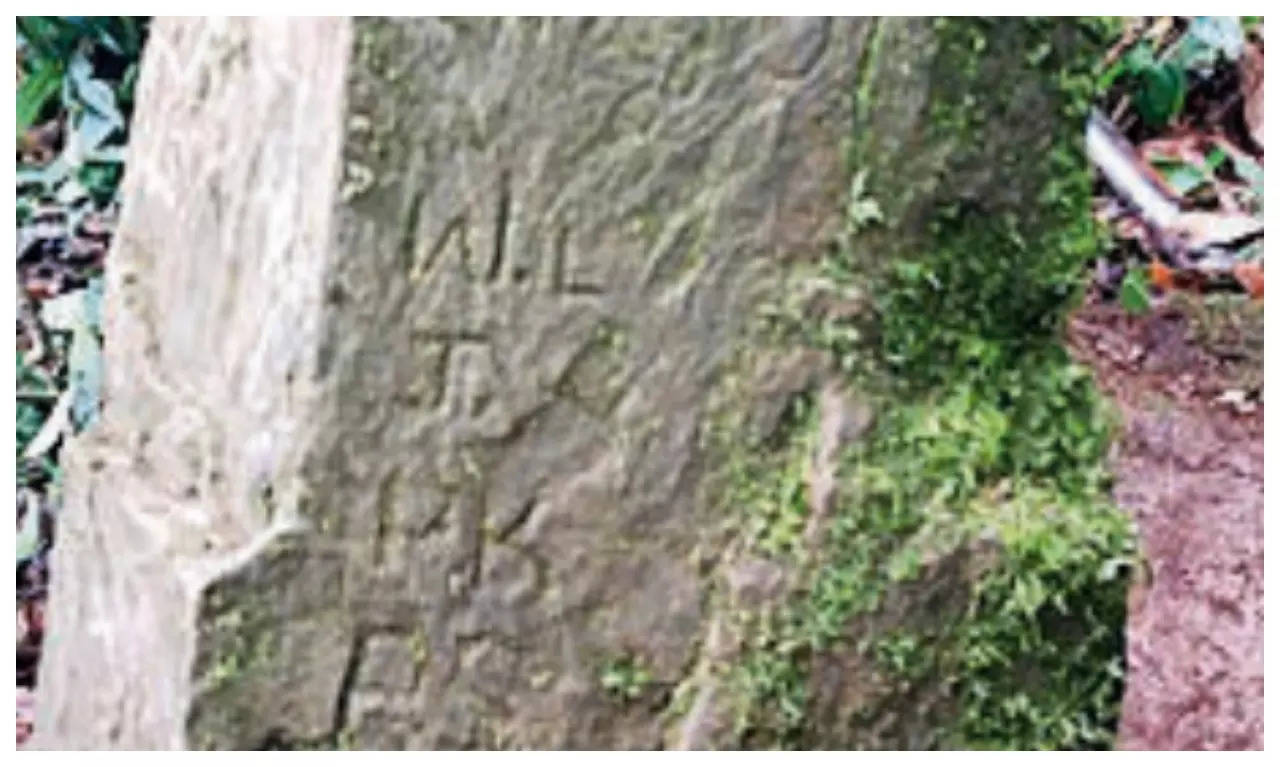Guwahati: A group of trekkers led by an Everester has stumbled upon a stone cave near the Arunachal-Myanmar border used as a transit camp of Allied Forces in World War II to stall the advance of the Japanese army.
Tagit Sorang’s team of 27 was scaling the hills of the frontier state’s Tirap district when it came across the cave at the 2,119 metre-high (6,952ft) “Longpongka” point on Friday. The trekkers gathered photographic evidence and other details the next day.
Locals said stones bearing circular symbols, abbreviations in English and some numbers carved by soldiers alongside the cave were key signs of the transit camp.
According to the locals, Allied Forces used the strategic point to resist Japanese soldiers making their way from Burma (now Myanmar) to vast parts of North-East Frontier Agency (now Arunachal Pradesh). The point was abandoned after the war and never recognised by the outside world so far.
“We call this hilltop ‘Silombhu’ in our local language. Allied Forces used this hilltop to stock ration and equipment sent from Assam,” Khunwang Khusia, a retired forester and native of Thinsa village who was also part of the team, said. The trek – part of a campaign against drugs – was organised by the district tourism office and locals of Thinsa village.
Locals believe the enemy bullets could not pierce the giant rocks of the cave and it was a safe shelter for hiding. The trekkers, too, couldn’t reach the end point of the rock cave, which has a narrow opening. “Unfortunately, porters from two neighbouring villages who used to carry the defence supplies have already passed away,” Tagit said.
District tourism officer (Tirap) Rigio Tabam said that able-bodied males carried ration, arms and ammunition from Dilighat in Assam to Longpongka, and then from Longpongka to the Myanmar border. They mostly belonged to the Tutsa and Nocte tribes. “Japanese soldiers could not open a new front from Myanmar towards NEFA,” he said.
It took the trekkers three hours to cover 7km from Thinsa village. The trek through high hills, trees and giant rocks turned out to be uncharted territory for them.
Tagit Sorang’s team of 27 was scaling the hills of the frontier state’s Tirap district when it came across the cave at the 2,119 metre-high (6,952ft) “Longpongka” point on Friday. The trekkers gathered photographic evidence and other details the next day.
Locals said stones bearing circular symbols, abbreviations in English and some numbers carved by soldiers alongside the cave were key signs of the transit camp.
According to the locals, Allied Forces used the strategic point to resist Japanese soldiers making their way from Burma (now Myanmar) to vast parts of North-East Frontier Agency (now Arunachal Pradesh). The point was abandoned after the war and never recognised by the outside world so far.
“We call this hilltop ‘Silombhu’ in our local language. Allied Forces used this hilltop to stock ration and equipment sent from Assam,” Khunwang Khusia, a retired forester and native of Thinsa village who was also part of the team, said. The trek – part of a campaign against drugs – was organised by the district tourism office and locals of Thinsa village.
Locals believe the enemy bullets could not pierce the giant rocks of the cave and it was a safe shelter for hiding. The trekkers, too, couldn’t reach the end point of the rock cave, which has a narrow opening. “Unfortunately, porters from two neighbouring villages who used to carry the defence supplies have already passed away,” Tagit said.
District tourism officer (Tirap) Rigio Tabam said that able-bodied males carried ration, arms and ammunition from Dilighat in Assam to Longpongka, and then from Longpongka to the Myanmar border. They mostly belonged to the Tutsa and Nocte tribes. “Japanese soldiers could not open a new front from Myanmar towards NEFA,” he said.
It took the trekkers three hours to cover 7km from Thinsa village. The trek through high hills, trees and giant rocks turned out to be uncharted territory for them.
